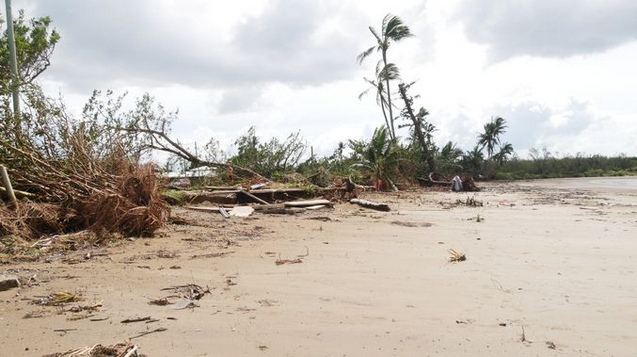The overwhelming majority of Australians think climate change is real, about two-thirds view themselves to be environmentalists "at heart", and just over half say the government should not allow new coal mines in the country, according data gathered by WWF and Roy Morgan.
Combining attitudes towards nature collected over two decades with a wide-ranging survey of 1800 respondents at the end of last year, the groups found a strong - and lately, rising - interest in protecting habitats on land and sea.
“The reef is certainly an iconic place that is clearly at the heart of Australia," Mr O'Gorman told Fairfax Media. "They care deeply about it and want to see it saved."
The back-to-back mass coral bleaching in the summers of 2015-16 and 2016-17 "really changed the psyche of how Australians see the reef," he said. "They were like two killer punches to a boxer."
Just over half of respondents viewed the current state of the reef as "already bad", with 84 per cent saying it was "declining" or "getting worse".
Most important places for Australia to protect  |
| Source: WWF
|
Koala concerns
Of species drawing particular concern, koalas topped the list with just over half of respondents saying it was the creature they would most like to see protected.
Bilbys and whales were next favoured at 30 per cent each, while sharks - many of which are faring poorly despite media interest in occasional bites - drew just 9 per cent support for protection.
|
Which iconic species would you like to see protected?  |
| Source: WWF |
Still, 81 per cent in March last year agreed with the view that "if we don't act now, we will never control our environmental problems", and 63 per cent supported the "at heart, I'm an environmentalist" description.
Climate of change
Despite perennial debate amongst politicians, the year-end survey found the great bulk - 86 per cent - agree that climate change is happening, with 65 per cent accepting humans are causing it, the report found.
Almost six in 10 named solar as their preferred energy source, ahead of wind at 15 per cent. Just seven per cent picked coal and 4 per cent gas.
“Coal is definitely on the nose and 69 per cent agree that coal and gas are putting the planet at risk," Mr O'Gorman said. “That’s a clear message to politicians but also...to electricity and energy providers that their licence to operate is disappearing extremely fast."
In that vein, 52 per cent of those surveyed supported the statement that "the federal government should not allow new coal mines", with only 22 per cent rejecting that statement, the report found.
Age gap
The survey also produced a generational divide between respondents aged 18-24 compared with those older than 65 years.
Younger and older Australians  |
| Source: WWF |
Still, the latter group indicated higher interest into recycling and energy saving, with more than two-thirds viewing themselves as environmentalists against half those in the younger cohort.
On other issues, 84 per cent supported action by their state governments to stop excessive tree-clearing, while some 85 per cent saw plastics as the number threat to the seas around us.
“In a very short period of time, plastics have - in terms of public perceptions - become an enormous threat to the oceans," Mr O'Gorman said. “People want particularly state governments and companies to take very specific action to take plastic from the system."
Links
- Sydney's warm, dry spell to extend another week as El Nino risks rise
- Dozens of animals and plants join Australia's threatened species list
- ANU presents climate change in beer coaster and bracelet form
- Someone is making a banned chemical that destroys the ozone layer, scientists suspect
- 'Carbon bomb': Clive Palmer seeks nod for mine twice the size of Adani's
- 'Glaring inconsistency': National emissions jump may be underestimated
- Budget 2018: Funding cuts put Paris climate goal further out of reach
- 'Cooked': Study finds Great Barrier Reef transformed by mass bleaching












